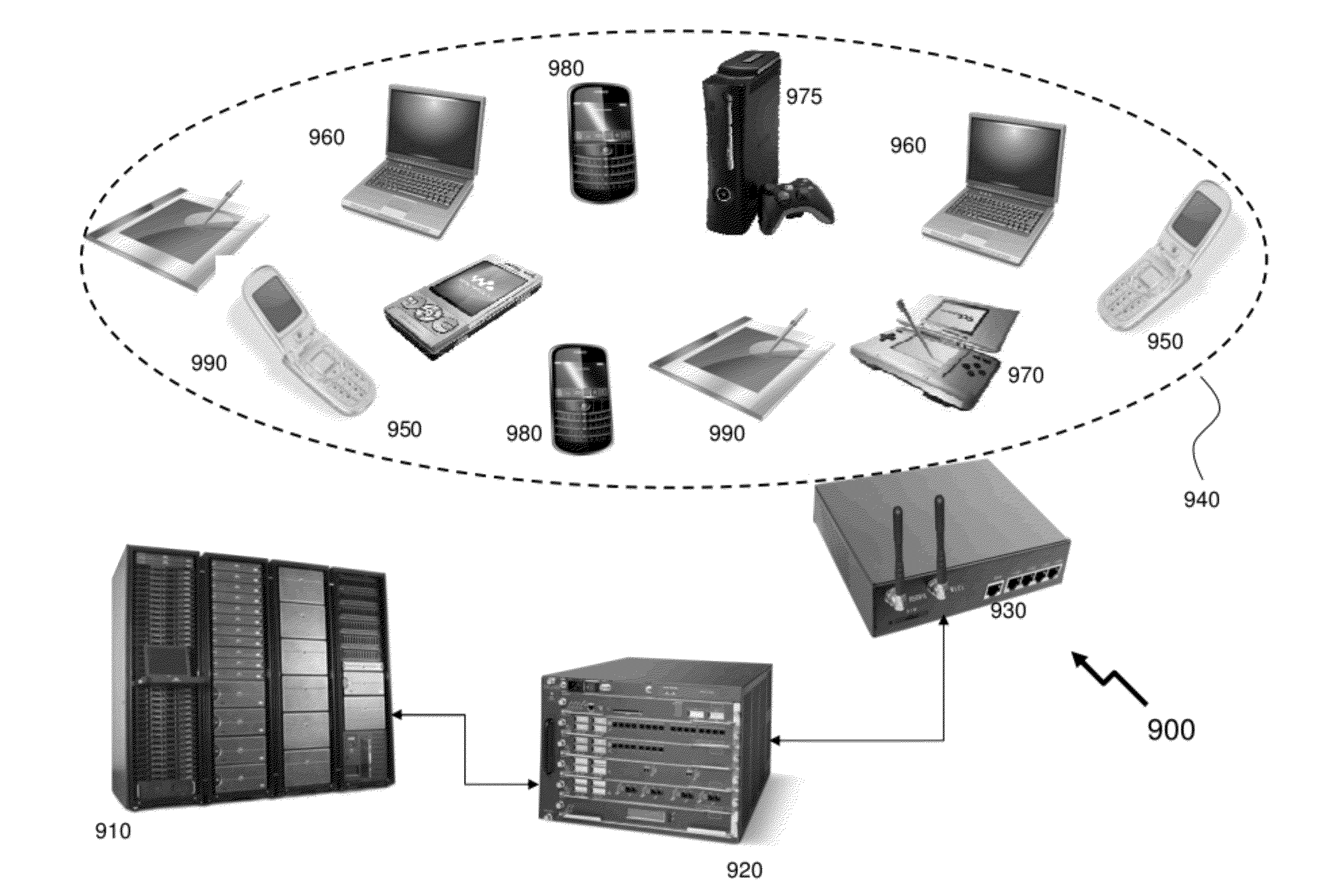Traffic management in distributed wireless networks
a wireless network and traffic management technology, applied in the field of wireless networks, can solve the problems of large majority of cellphone connections currently being low functionality, increasing the consumption of bandwidth and network resources by the average user, and being an important issu
- Summary
- Abstract
- Description
- Claims
- Application Information
AI Technical Summary
Benefits of technology
Problems solved by technology
Method used
Image
Examples
Embodiment Construction
[0112]The present invention is directed to wireless networks and more specifically to managing access and ensuring quality of service within wireless networks.
[0113]For the purposes of defining aspects of wireless networks and their operating principles the background and embodiments of the invention will be described with respect to the IEEE 802.11 Wireless LAN Standard, which describes two major components, the mobile station (STA) and the fixed access point (AP). It would be understood by one skilled in the art that the embodiments of the invention and the principles within the specification overall may be applied to other wireless networks, including those operating to standards such as those defined supra.
[0114]Within the following description of embodiments of the invention “Service Class” is used to represent a set of traffic that requires specific delay, loss, and jitter characteristics from the network (see “Configuration Guidelines for DiffServ Service Classes” Internet En...
PUM
 Login to View More
Login to View More Abstract
Description
Claims
Application Information
 Login to View More
Login to View More - R&D
- Intellectual Property
- Life Sciences
- Materials
- Tech Scout
- Unparalleled Data Quality
- Higher Quality Content
- 60% Fewer Hallucinations
Browse by: Latest US Patents, China's latest patents, Technical Efficacy Thesaurus, Application Domain, Technology Topic, Popular Technical Reports.
© 2025 PatSnap. All rights reserved.Legal|Privacy policy|Modern Slavery Act Transparency Statement|Sitemap|About US| Contact US: help@patsnap.com



